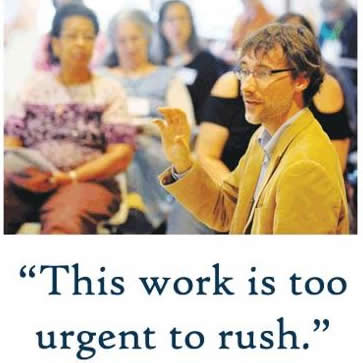| “Conflict is not a problem that needs
solving but a phenomenon that needs understanding.” ~Dominic Barter [more restorative justice quotes] |
|
|
What is Restorative Justice? Restorative Justice is a roughly 40-year international movement consisting of a variety of different restorative practices from all over the world, many of which have indigenous roots. While the specifics vary from practice to practice, at the heart of it, restorative practices provide an alternative (or additional) approach to the punitive systems that currently dominate most Western mainstream societies’ approach to crime and conflict. Rather than focusing on assigning blame and administering punishment, restorative practices typically bring together the parties involved and impacted by what happened for the purpose of mutual understanding (of what happened and the harm that occurred) and working together to fix the harm and, if necessary, restore the relationships. |
 |
What are Restorative Circles? Restorative Circles are a specific restorative practice developed in the favelas of Brazil by Dominic Barter and his associates. According to Barter, a Restorative Circle is a community process for supporting those in conflict. It brings together (within a chosen systemic context) the three parties to a conflict: (1) those whose action(s) produced harm(2) those directly targeted by the harmful action(s) and (3) the community members who may have created conditions for the harm to have happened and/or who feel impacted by the conflict or its consequences. Restorative Circles are facilitated by circle-keepers or
facilitators who ideally come directly from the community in
which the act occurred. They commit to serving the emergent
wisdom of the participants through their willingness to offer
agreed upon questions and to track the co-creation of meaning
and action by those present. Participants invite each other and
attend voluntarily. The dialogue process used is shared openly
with all participants. The process ends when actions have
been found that bring mutual benefit that nurtures the inherent
integrity of all those involved in the conflict. Restorative
Circles are facilitated in three stages that arise in an
approximate sequence and identify the key factors in the
conflict, reach agreements on next steps, and evaluate the
results. As circles form, they invite shared power, mutual
understanding and self-responsibility within community.
Below are several articles I've written or co-written about Restorative Justice (with a focus on Restorative Circles). The Psychology Today article and the Peace Profile will be most accessible to those who are first coming to this work, while the one by Ortega et al is most technical.
Links to learn more
|
|